How to Implement Dynamic Open Graph Images: Simplify Your Social Media Strategy
Welcome to the world of effortless social media optimization! If you're tired of manually updating Open Graph (OG) images for every new page or blog post on your website, you're about to discover a game-changer.
Imagine a world where your website automatically generates captivating, share-worthy OG images for each page, tailored to its unique content. This isn't just a dream; it's a practical, achievable reality for your website – and it's simpler than you think.
Before and After: The Dynamic OG Image Transformation
To give you a taste of the transformation we're talking about, let's look at an example:
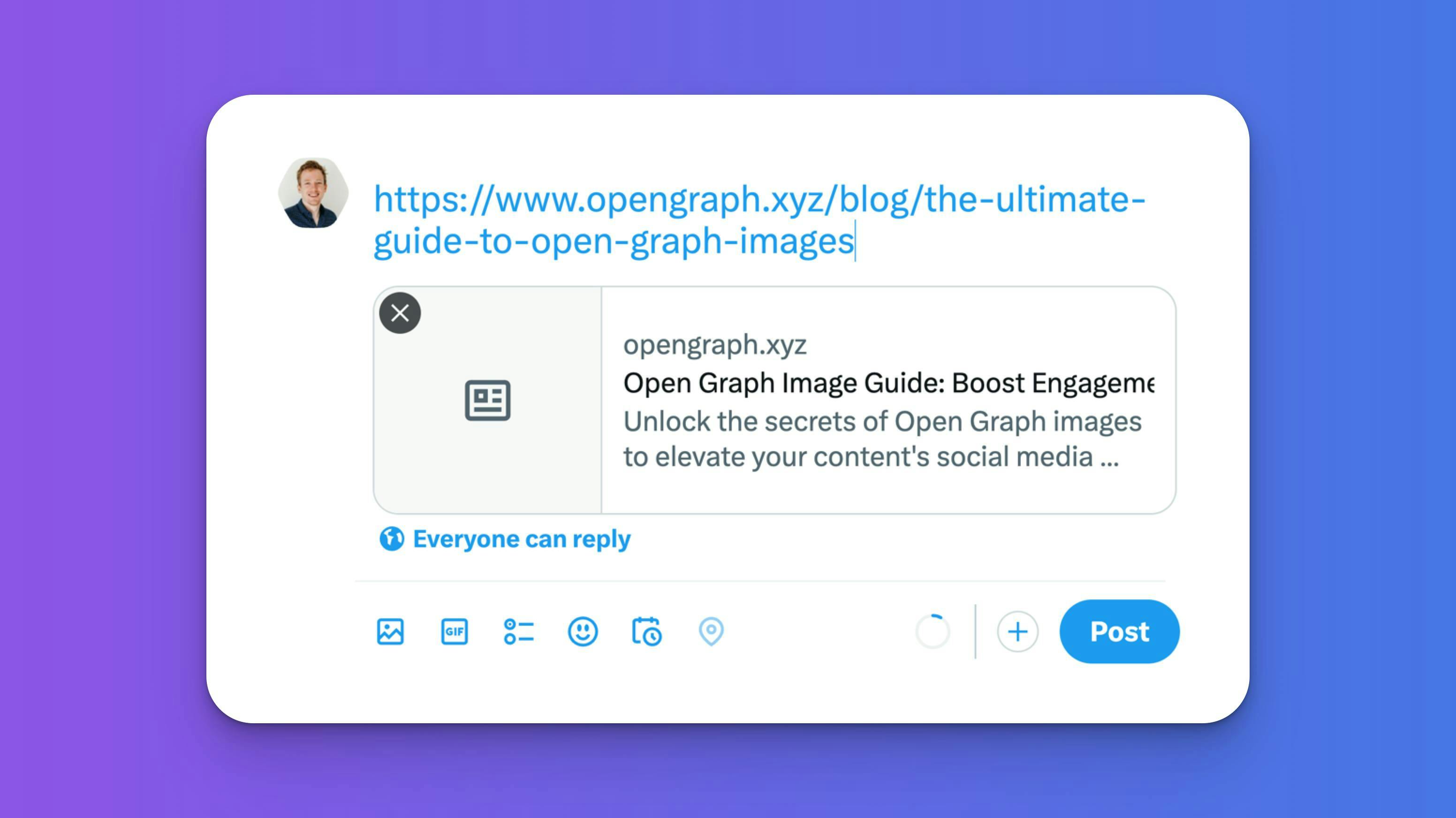
When sharing a link on Twitter without an OG image, the card appears basic and text-only. It lacks visual appeal and doesn't capture the attention it could.
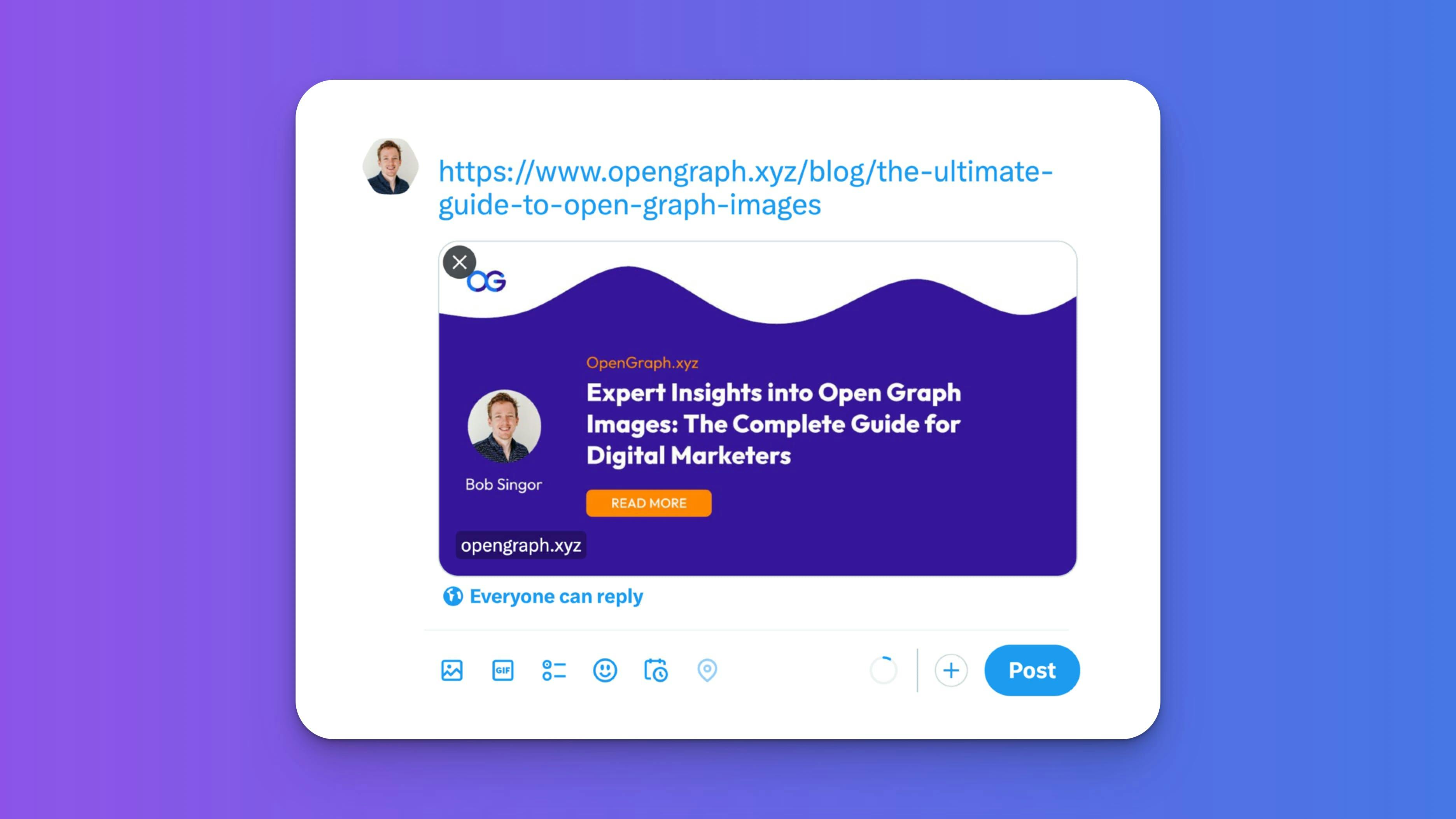
Once you implement dynamic OG images, each Twitter card transforms into an engaging, visually appealing preview. It dynamically showcases relevant images and text specific to each page, dramatically enhancing the visual appeal and context of your shares.
Now, let's dive into how you can make this transformation a reality on your website.
Getting Started with Dynamic OG Images
Ready to streamline your website's social media presence? Whether you're a WordPress aficionado or a master of custom-coded sites, setting up dynamic Open Graph images is a straightforward process. Let's explore how you can easily find and implement your template URL to automate and enhance your site's OG image generation.
For WordPress Users
If you're running a WordPress site, simplifying your OG image generation is a breeze. Head over to our detailed guide: "Dynamic Open Graph Images in WordPress" for a tailored walkthrough.
For Shopify Users
Shopify store owners can also benefit from dynamic OG images. To learn how to implement this on your Shopify store, check out our dedicated guide: "Dynamically Generate Open Graph Images for Your Shopify Store". This guide provides step-by-step instructions specific to Shopify's platform.
Setting Up on Other Platforms
For those not using WordPress or Shopify, the process is equally straightforward, whether you're using a different CMS or a custom-coded site. In the next section, we will explain what a dynamic template URL is. This will give you the basic knowledge needed to understand how our system enhances your OG images, regardless of the platform you're using.
Understanding the Dynamic Template URL
Before diving into finding your specific template URL, let's first understand what an Dynamic Template URL is and how it works.
An Dynamic Template URL is a structured web address uniquely designed by our platform. It dynamically generates an OG image based on the parameters you input. Think of it as a customizable template for your OG images.
Try It Yourself: Interactive Example
To illustrate this concept, we've created a very basic example template. This template is intentionally simple, featuring just text within an image with a large border, to demonstrate the principle of dynamic generation.
Here's a straightforward template URL for you to experiment with:
https://ogcdn.net/e23b4a4f-83c2-4d9b-addb-051de54d819c/v1/{title_text}/og.png
This URL contains a placeholder {title_text} where you can insert your own text. For example:
https://ogcdn.net/e23b4a4f-83c2-4d9b-addb-051de54d819c/v1/This%20is%20an%20example%20of%20an%20automatically%20generated%20OG%20Image/og.png
In this example, the {title_text} is replaced with "This is an example of an automatically generated OG Image". Copy and paste this link into your browser's address bar to see an OG image with the text you provided.
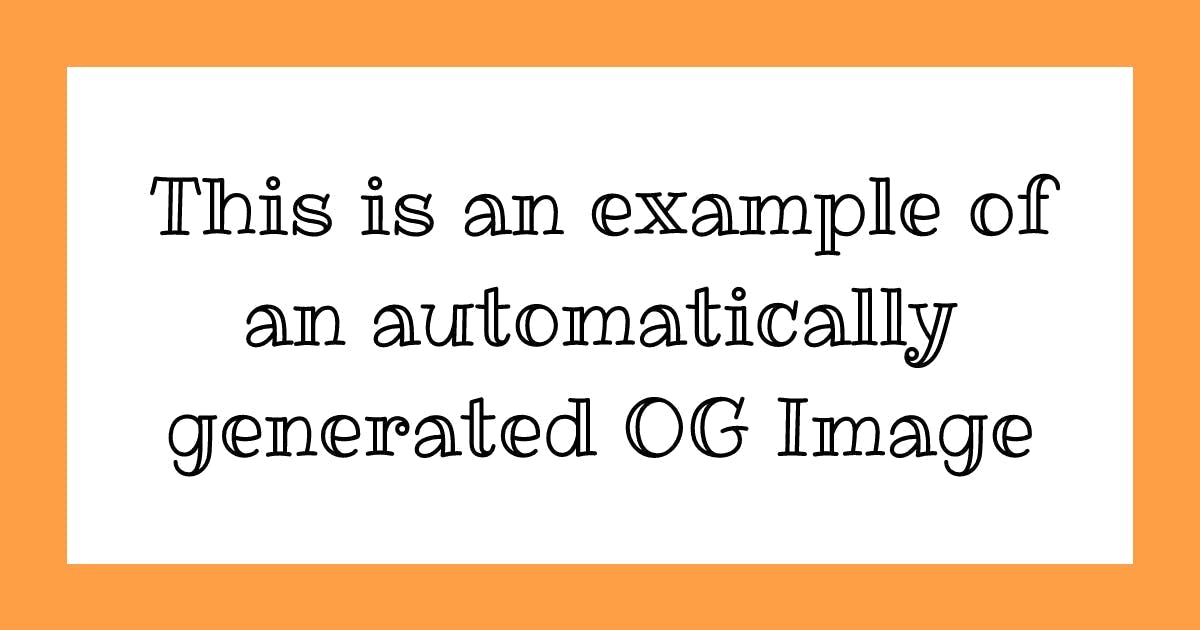
Feel free to modify the text after /v1/ in the URL. Replace
This%20is%20an%20example%20of%20an%20automatically%20generated%20OG%20Image
with any text of your choice. Notice how the image updates in real time to reflect your changes.
Engaging With Dynamic Content
Through this simple template, you can see the power and flexibility of dynamic OG images. Just by altering part of the URL, you can personalize the image for any page or post on your website, instantaneously.
Understanding this basic principle sets the stage for you to find and use your own, more complex template URL. Now, let’s proceed to the next step: finding your specific template URL structure.
Finding Your Template URL
For Free Version Users
- Visit opengraph.xyz and enter a page URL from your website.
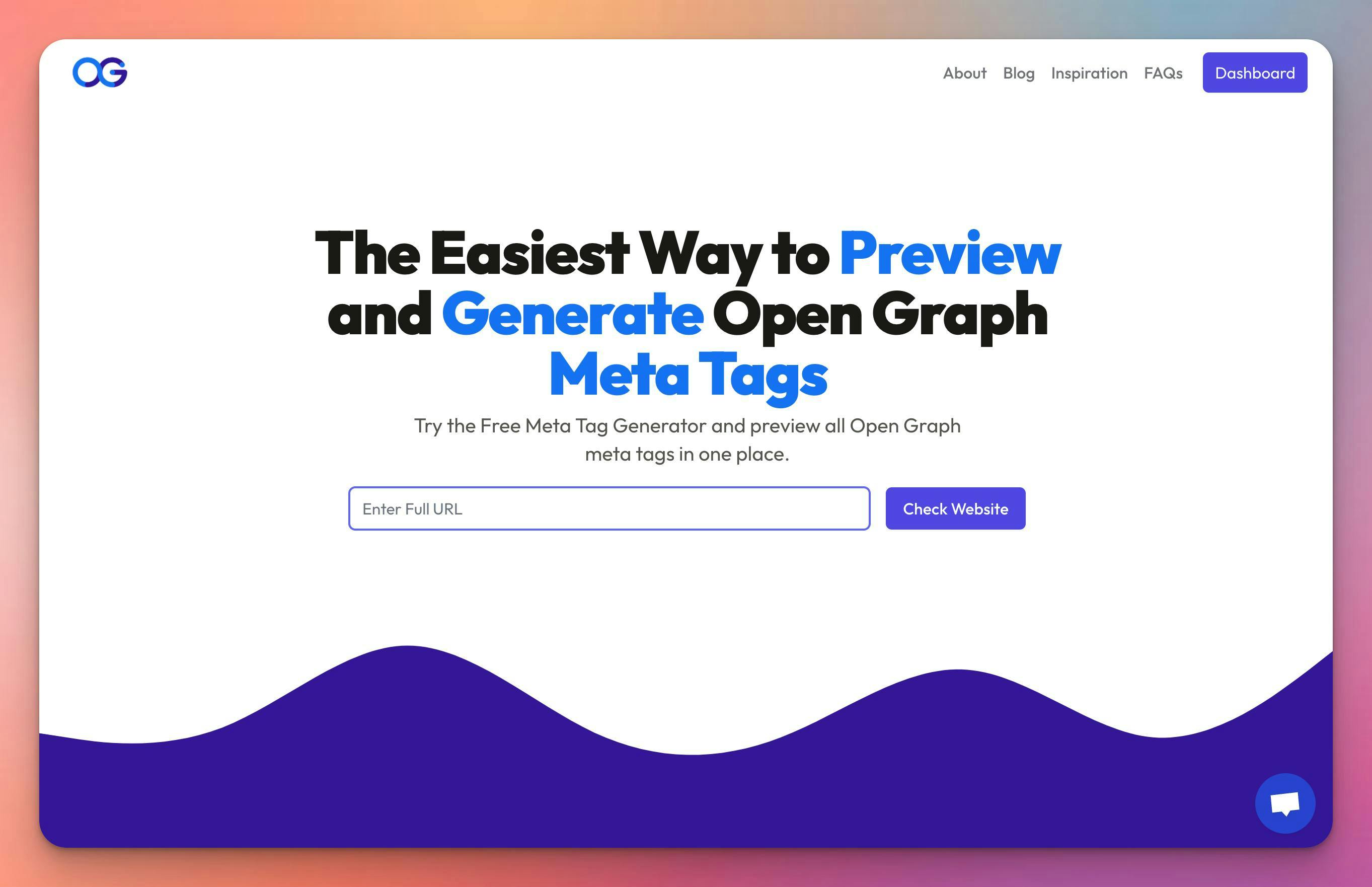
- In the "Edit" section, click "Choose OG Image template".
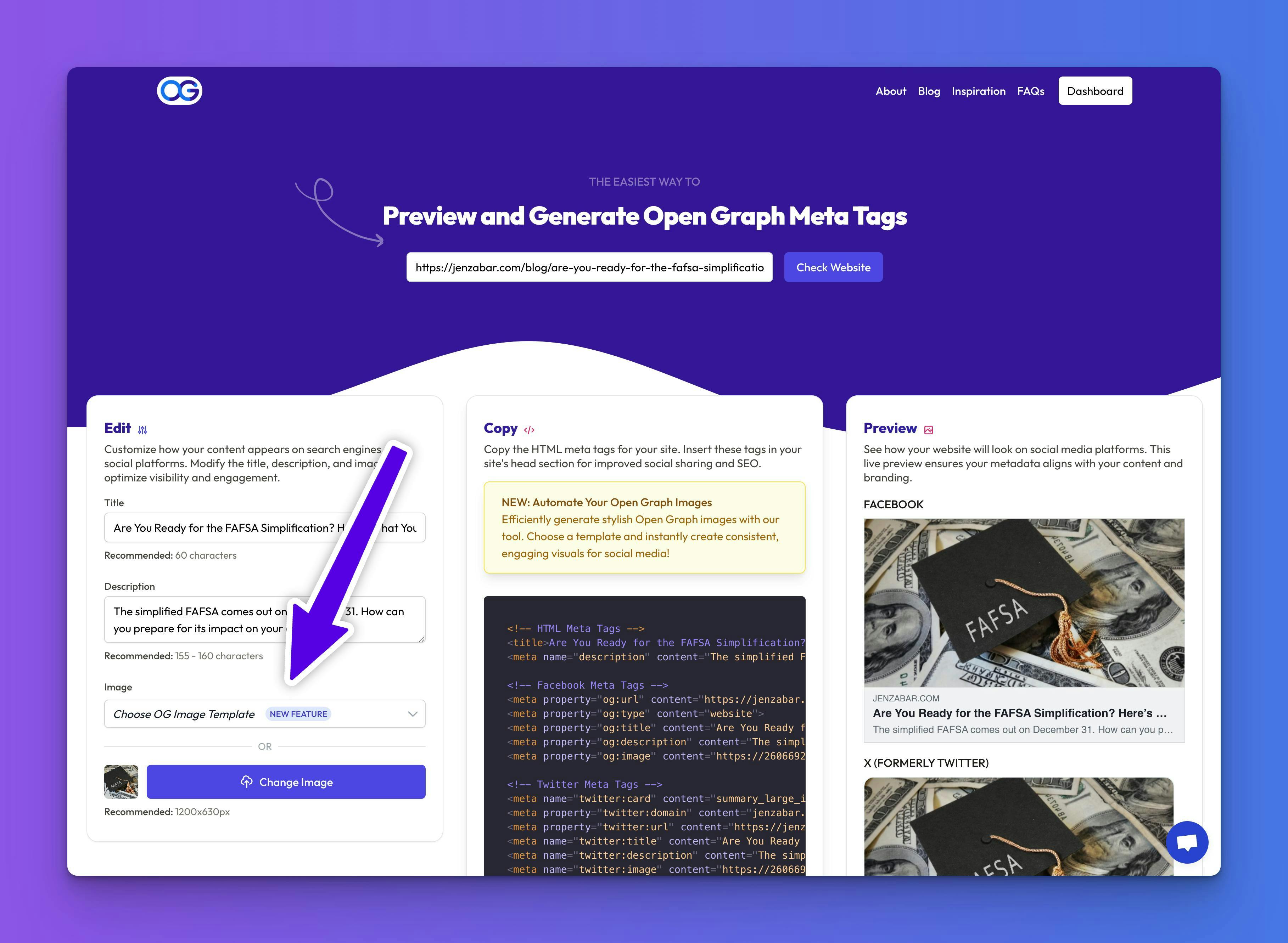
- Choose a free template
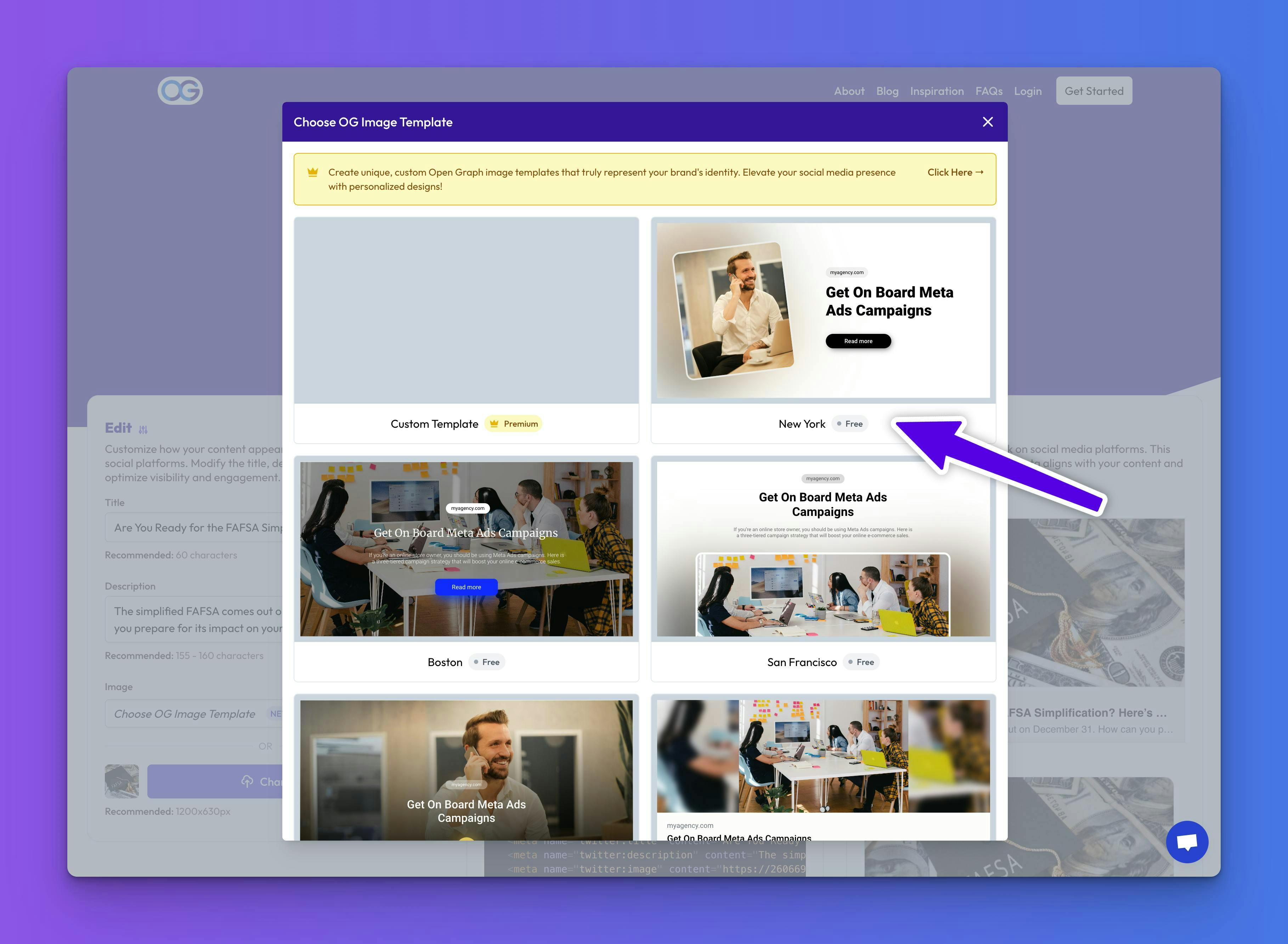
- Go to the "Copy" section to find your code snippet.
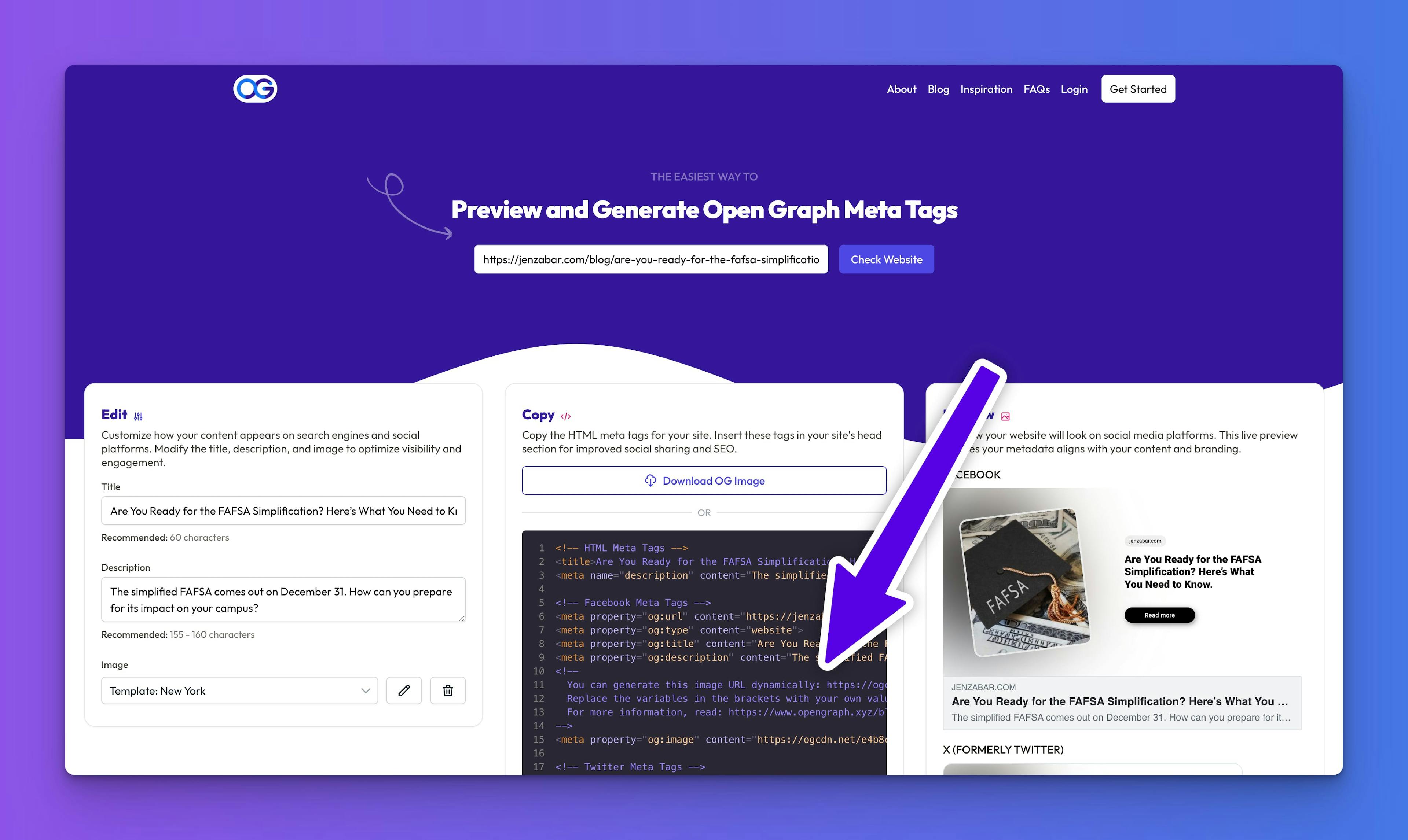
- Your template URL is in the comment on lines 10-14
<!--You can generate this image URL dynamically: [Your Template URL]Replace the variables in the brackets with your own values and use this URL in the image tag below this comment. Ensure values are URL encoded.For more information, read: https://www.opengraph.xyz/blog/how-to-implement-dynamic-open-graph-images-->
- In the OpenGraph.xyz dashboard, create your custom template.
- Once editing is complete, click "Integration" at the top right.
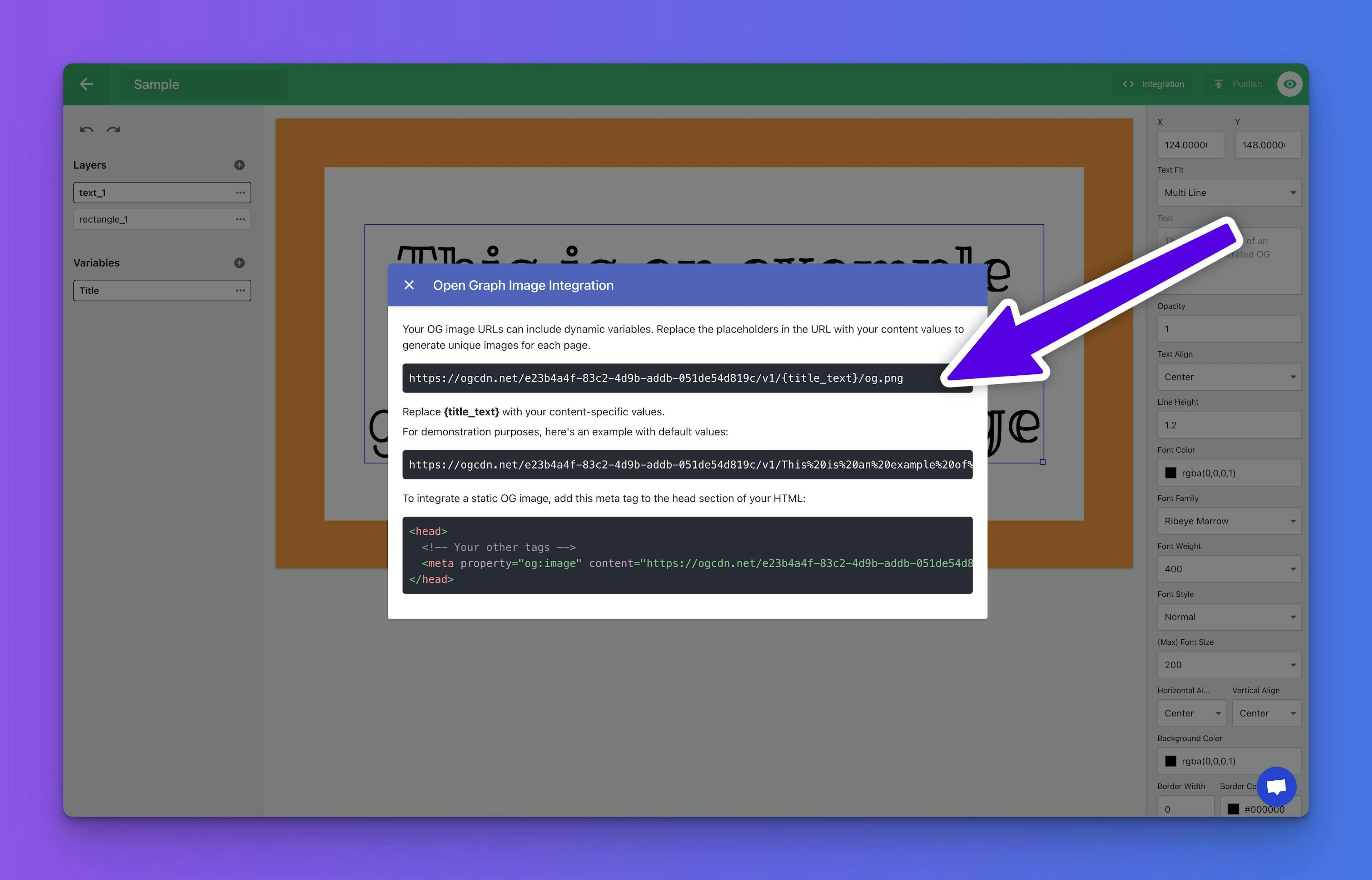
- This will reveal the URL for your custom template.
Next Steps: Implementing Your Template URL
Once you have your template URL, you're ready to dynamically generate OG images for each page of your site. Let's delve into how to do this in the upcoming section.
Implementing Your Template URL
Now that you have your template URL, the next step is to implement it on your website. This involves dynamically generating unique OG images for each page or post by replacing placeholders in the template URL with actual content data.
Understanding and Utilizing Your Template URL
Your template URL will look something like this:
https://ogcdn.net/.../.../{site_text}/{title_text}/{description_text}/{image_url}/og.png
Each bracketed section {} is a placeholder for dynamic content. The key to using this URL effectively is to replace these placeholders with real data corresponding to each specific page or post.
Example: Replacing Placeholders
Here's how you can replace these placeholders in different programming environments:
JavaScript Example
In a JavaScript environment, you might fetch data from your webpage and dynamically construct the URL like this:
const title = encodeURIComponent(document.title);const description = encodeURIComponent("Your page description here");const imageUrl = encodeURIComponent("https://yourdomain.com/path/to/image.jpg");//template settingsconst templateId = 'e23b4a4f-83c2-4d9b-addb-051de54d819c';const versionNumber = 1;const templateURL = `https://ogcdn.net/${templateId}/v${versionNumber}/${title}/${description}/${imageUrl}/og.png`;
In this example, encodeURIComponent ensures that titles, descriptions, and URLs are correctly URL encoded, replacing special characters to make them safe for use in a URL.
PHP Example
In a PHP environment, especially when generating dynamic OG images for blog posts or articles, your code might look like this:
$title = urlencode($post->title);$description = urlencode($post->description);$imageUrl = urlencode($post->imageUrl);// Template settings$templateId = 'e23b4a4f-83c2-4d9b-addb-051de54d819c';$versionNumber = 1;$templateURL = "https://ogcdn.net/{$templateId}/v{$versionNumber}/{$title}/{$description}/{$imageUrl}/og.png";
Here, urlencode is used for URL encoding in PHP, ensuring that the dynamic values are correctly formatted for use in URLs.
Once you have generated the templateURL, the next step is to include it in the og:image meta tag of your webpage's HTML. This ensures that social media platforms use your dynamically generated image when your page is shared.
Example of Integration in HTML
Here's how you can integrate the templateURL into the og:image meta tag:
<!DOCTYPE html><html><head><title>Your Page Title</title><meta name="description" content="Your Page Description"><!-- Other meta tags --><!-- Dynamic Open Graph Image --><meta property="og:image" content="<?php echo $templateURL; ?>" /></head><body><!-- Your page content --></body></html>
In this example, for PHP, the templateURL is echoed directly into the content attribute of the og:image meta tag. When the page is served, the og:image tag will contain the URL of your dynamically generated OG image.
Next.js (React) Implementation Example
In a Next.js application, set the dynamic OG image URL in the <Head> component of your page:
import Head from 'next/head';const MyPage = () => {const title = 'Your Page Title';const description = 'Your Page Description';const imageUrl = 'https://yourdomain.com/path/to/image.jpg';const templateId = 'e23b4a4f-83c2-4d9b-addb-051de54d819c';const versionNumber = 1;const templateURL = `https://ogcdn.net/${templateId}/v${versionNumber}/${encodeURIComponent(title)}/${encodeURIComponent(description)}/${encodeURIComponent(imageUrl)}/og.png`;return (<><Head><title>{title}</title><meta name="description" content={description} /><meta property="og:image" content={templateURL} /></Head>{/* Your page content */}</>);};export default MyPage;
In this example for Next.js, the necessary variables (title, description, imageUrl, templateId, and versionNumber) are defined within the component. These variables are then used to construct the templateURL, which is inserted into the og:image meta tag within the <Head> component. This setup ensures that the dynamic OG image URL is appropriately rendered for social media sharing.
Testing and Validation
Once you've implemented the dynamic URL generation, it's crucial to test thoroughly. Verify that the correct OG image is generated for different pages, and use tools like Facebook's Sharing Debugger to preview how your OG images will appear on social media platforms.